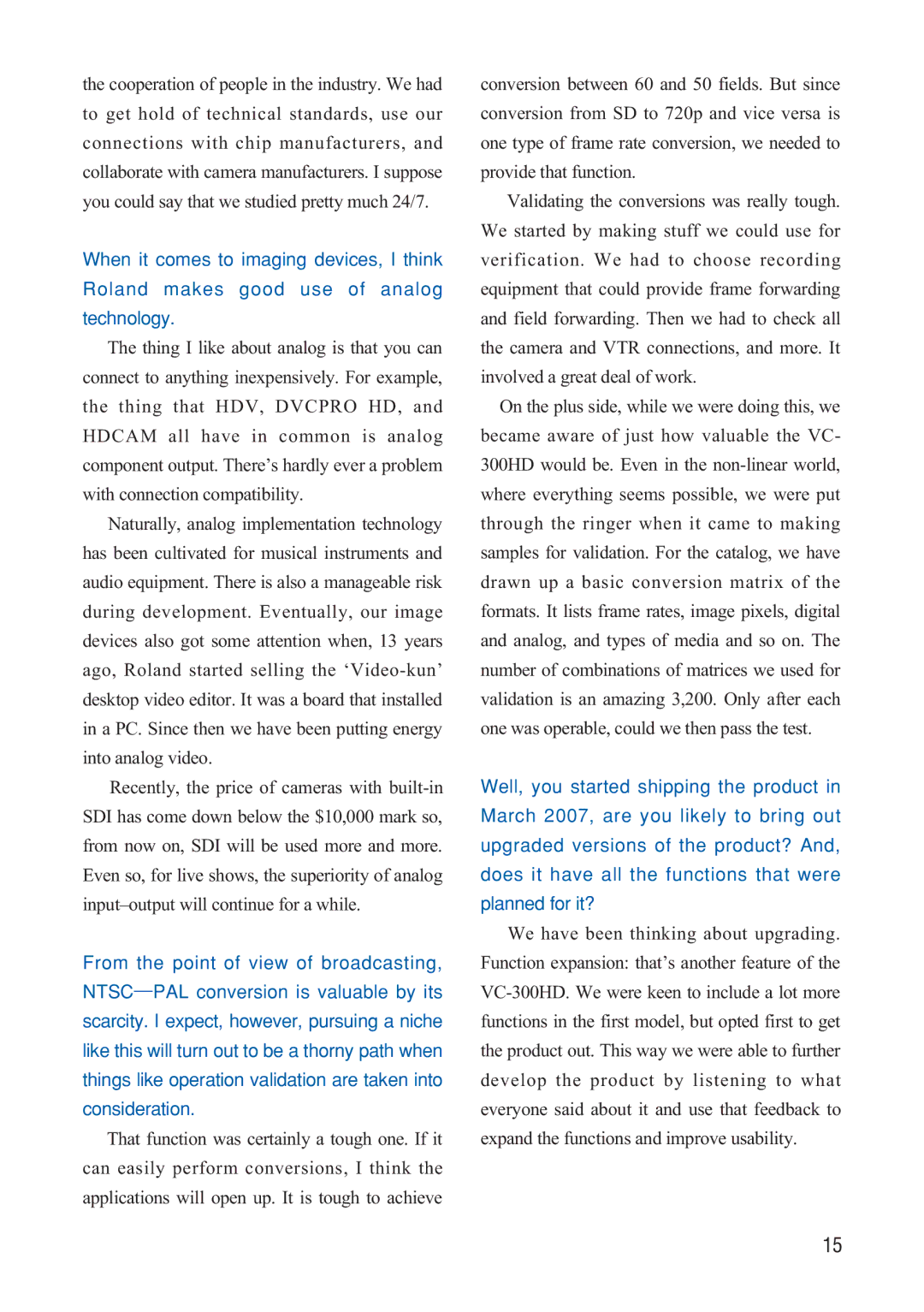the cooperation of people in the industry. We had to get hold of technical standards, use our connections with chip manufacturers, and collaborate with camera manufacturers. I suppose you could say that we studied pretty much 24/7.
When it comes to imaging devices, I think
Roland makes good use of analog
technology.
The thing I like about analog is that you can connect to anything inexpensively. For example, the thing that HDV, DVCPRO HD, and HDCAM all have in common is analog component output. There’s hardly ever a problem with connection compatibility.
Naturally, analog implementation technology has been cultivated for musical instruments and audio equipment. There is also a manageable risk during development. Eventually, our image devices also got some attention when, 13 years ago, Roland started selling the
Recently, the price of cameras with
From the point of view of broadcasting, NTSC―PAL conversion is valuable by its scarcity. I expect, however, pursuing a niche like this will turn out to be a thorny path when things like operation validation are taken into consideration.
That function was certainly a tough one. If it can easily perform conversions, I think the applications will open up. It is tough to achieve
conversion between 60 and 50 fields. But since conversion from SD to 720p and vice versa is one type of frame rate conversion, we needed to provide that function.
Validating the conversions was really tough. We started by making stuff we could use for verification. We had to choose recording equipment that could provide frame forwarding and field forwarding. Then we had to check all the camera and VTR connections, and more. It involved a great deal of work.
On the plus side, while we were doing this, we became aware of just how valuable the VC- 300HD would be. Even in the
Well, you started shipping the product in March 2007, are you likely to bring out upgraded versions of the product? And, does it have all the functions that were planned for it?
We have been thinking about upgrading. Function expansion: that’s another feature of the
15
